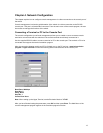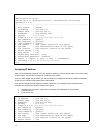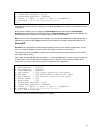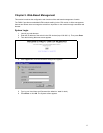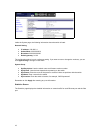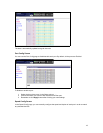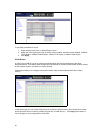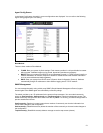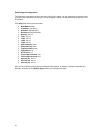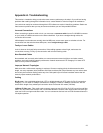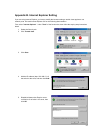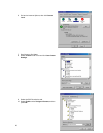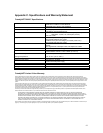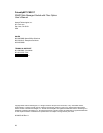23
Appendix A. Troubleshooting
This section is intended to help you solve the most common problems on the switch. If you still are having
problems after reading through the information here, contact Asanté’s Technical Support for assistance.
Your switch can easily be monitored through the LED indicators to assist in identifying problems. Below are
listed common problems that you may encounter and where you can find possible solutions.
Incorrect Connections
When connecting to another switch or hub, you must use a crossover cable from an RJ-45 MDIX connector
on your switch to a MDIX connector on the other switch/hub. If you have a straight-through cable, the
connection will not work.
LAN adapters in end nodes are normally wired as MDI ports, as are some ports on switches or hubs. For
connections from the switch to these MDI ports, use a straight-through cable.
Faulty or Loose Cables
Look for loose or obviously faulty connections. If the cabling appears to be all right, make sure the
connections are snug. Finally, try the connection with a known working cable.
Non-Standard Cables
Non-standard and incorrectly wired cables can cause numerous network collisions and other network
problems, seriously impairing network performance. Asanté recommends UTP Category 5 or better UTP
cable for every network installation.
Improper Network Topologies
Make sure that a valid network topology is employed. Common topology faults include excessive cable
length, too many repeaters (hubs) between end nodes, and data path loops. Between any two nodes, there
should only be one active cabling path at any time. Data path loops will cause broadcast storms that will
severely impact network performance.
Cabling
RJ-45 ports: Use unshielded twisted-pair (UTP) or shield twisted-pair (STP) cable for RJ-45 connections:
Category 3, 4 or 5 cable for 10Mbps connections or Category 5 cable for 100Mbps connections. Also be
sure that the length of any twisted-pair connection does not exceed 100 meters (328 feet).
100Base-FX fiber port:
Fiber multi-mode connector type must use 50/125 or 62.5/125 um multi-mode fiber
cable. You can connect two devices over a 2-kilometer distance. However, fiber single-mode connector type
must use 9/125 um single-mode fiber cable. You can connect two devices over a15~60-kilometer distance in
full-duplex operation.



